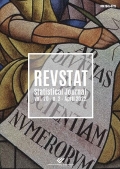Optimal Reinsurance of Dependent Risks
DOI:
https://doi.org/10.57805/revstat.v20i2.367Keywords:
Reinsurance, Dependent Risks, Copulas, Premium Calculation Principles, Expected Utility, Adjustment CoefficientAbstract
We analyse the problem of finding the optimal combination of quota-share and stop loss treaties, maximizing the expected utility or the adjustment coefficient of the cedent, for each of two risks dependent through a copula structure. By risk we mean a line of business or a portfolio of policies. Results are obtained numerically, using the software Mathematica. Sensitivity of the optimal reinsurance strategy to several factors are investigated, including: i) the dependence level, by means of the Kendall’s tau and the dependence parameter; ii) the type of dependence, using different copulas describing different tail behaviour; iii) the reinsurance calculation principles, where expected value, variance and standard deviation principles are considered. Results show that different dependence structures, yield significantly different optimal solutions. The optimal treaty is also very sensible to the reinsurance premium calculation principle. Namely, for variance related premiums the optimal solution is not the pure stop loss. In general, the maximum adjustment coefficient decreases when dependence increases.
Downloads
Published
How to Cite
Issue
Section
License
Copyright (c) 2020 REVSTAT-Statistical Journal

This work is licensed under a Creative Commons Attribution 4.0 International License.

